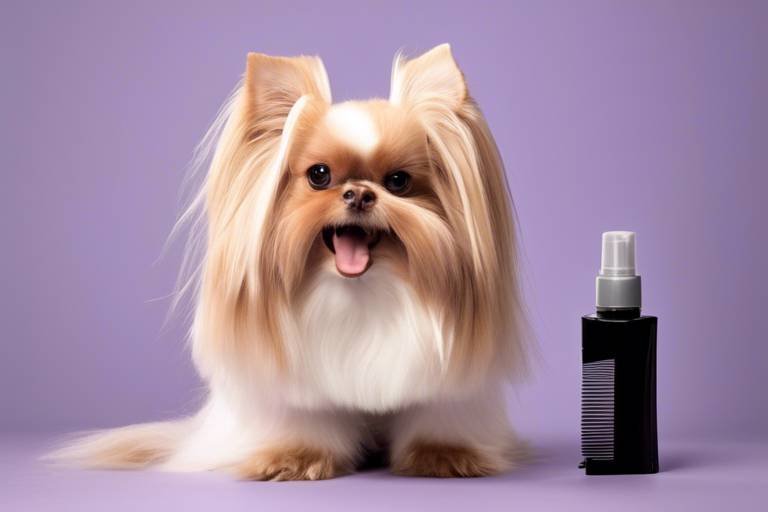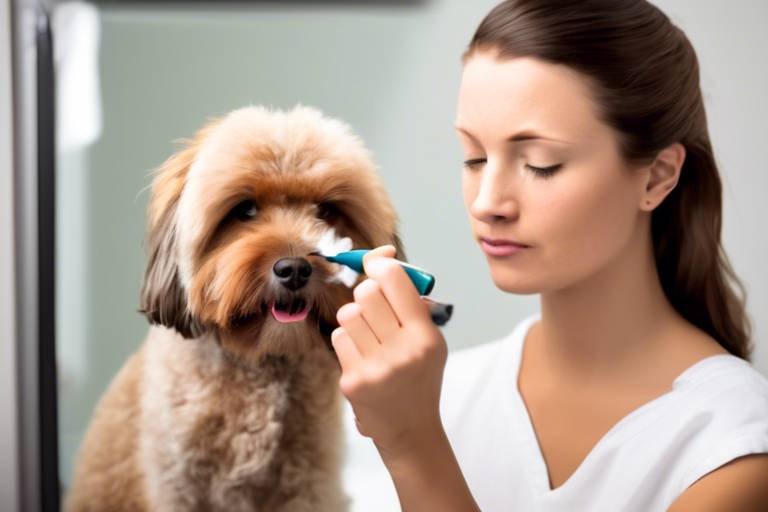Tips for Grooming Dogs with Natural Oils
Grooming your furry friend can be one of the most rewarding experiences for both you and your pet. Imagine transforming a simple bath into a luxurious spa day! Using natural oils not only enhances the grooming process but also contributes to your dog's overall health and happiness. With the right techniques and oils, you can turn grooming into a bonding experience that leaves your dog feeling pampered and looking fabulous. So, let’s dive into the world of natural oils and discover how they can benefit your canine companion!
Natural oils are like nature’s gift to our pets. They offer a plethora of benefits that go beyond just making your dog smell good. For starters, these oils possess incredible moisturizing properties that can soothe dry and irritated skin. Imagine your dog scratching and uncomfortable; a few drops of the right oil can make a world of difference. Additionally, natural oils can enhance your dog's coat shine, making them look like they just walked off a magazine cover!
Moreover, many natural oils have antibacterial and anti-inflammatory properties. This means they can help alleviate skin irritations and promote healing. By incorporating these oils into your grooming routine, you’re not just making your dog look good; you’re also ensuring their skin and coat are healthy. It’s a win-win situation!
Selecting the appropriate natural oils is crucial for effective grooming. Not all oils are created equal, and different oils serve various purposes. For example, if your dog has a dry, flaky coat, you might want to opt for an oil that’s particularly hydrating. On the other hand, if you're looking to add shine to a dull coat, you'll want something rich in antioxidants. Understanding your dog's specific needs and coat type will help you make the best choice.
Here are some popular oils that can be beneficial for dogs:
- Coconut Oil - Known for its moisturizing and antibacterial properties.
- Olive Oil - Rich in antioxidants and great for overall skin health.
- Jojoba Oil - Excellent for dry skin and adds a beautiful shine.
Let’s take a closer look at some of the most popular natural oils for dog grooming:
Coconut oil is a powerhouse when it comes to dog grooming. Its moisturizing and antibacterial properties make it a favorite among pet owners. Whether your dog has dry skin or just needs a little extra shine, coconut oil can help soothe and nourish their coat. Plus, it’s safe for dogs to ingest, so you can even add it to their diet for added benefits!
Rich in antioxidants, olive oil is another fantastic choice for grooming. It can improve your dog's skin health while adding a beautiful luster to their fur. Not only does it work wonders on the outside, but when included in their diet, it can promote overall well-being. Think of it as a health booster for your furry friend!
While essential oils can offer additional benefits, they must be used with caution. Some essential oils can be harmful to dogs if not diluted properly. Always consult with your veterinarian before introducing essential oils into your grooming routine. Safe options like lavender or chamomile can provide calming effects and help with relaxation during grooming sessions.
Now that you know which oils to use, let’s talk about how to apply them effectively. Proper application techniques are vital for maximizing the benefits of natural oils. Start by warming a few drops of oil in your hands before gently massaging it into your dog’s coat. This not only helps the oil absorb better but also creates a soothing experience for your pet.
Incorporating massage while applying oils can enhance absorption and provide a calming experience for your dog. Use your fingertips to work the oil into the skin, focusing on areas that may be dry or itchy. Think of it as a mini spa treatment that your dog will love! Not only does this technique promote relaxation, but it also strengthens the bond between you and your furry companion.
Knowing how often to use natural oils is important for maintaining your dog's coat health. Generally, once a week is sufficient for most dogs, but this can vary based on their coat type and skin condition. Pay attention to how your dog’s skin and coat respond, and adjust the frequency accordingly. Overuse can lead to greasy fur or skin irritation, so moderation is key!
1. Can I use human oils on my dog?
No, not all human oils are safe for dogs. Always choose oils specifically formulated for pets.
2. How do I know if my dog is allergic to an oil?
Start with a small patch test and monitor for any signs of irritation or allergic reactions.
3. Are there any oils I should avoid?
Yes, oils like tea tree oil and eucalyptus can be toxic to dogs and should be avoided.
4. Can I mix different oils?
Yes, mixing oils can be beneficial, but ensure they are safe for dogs and properly diluted.
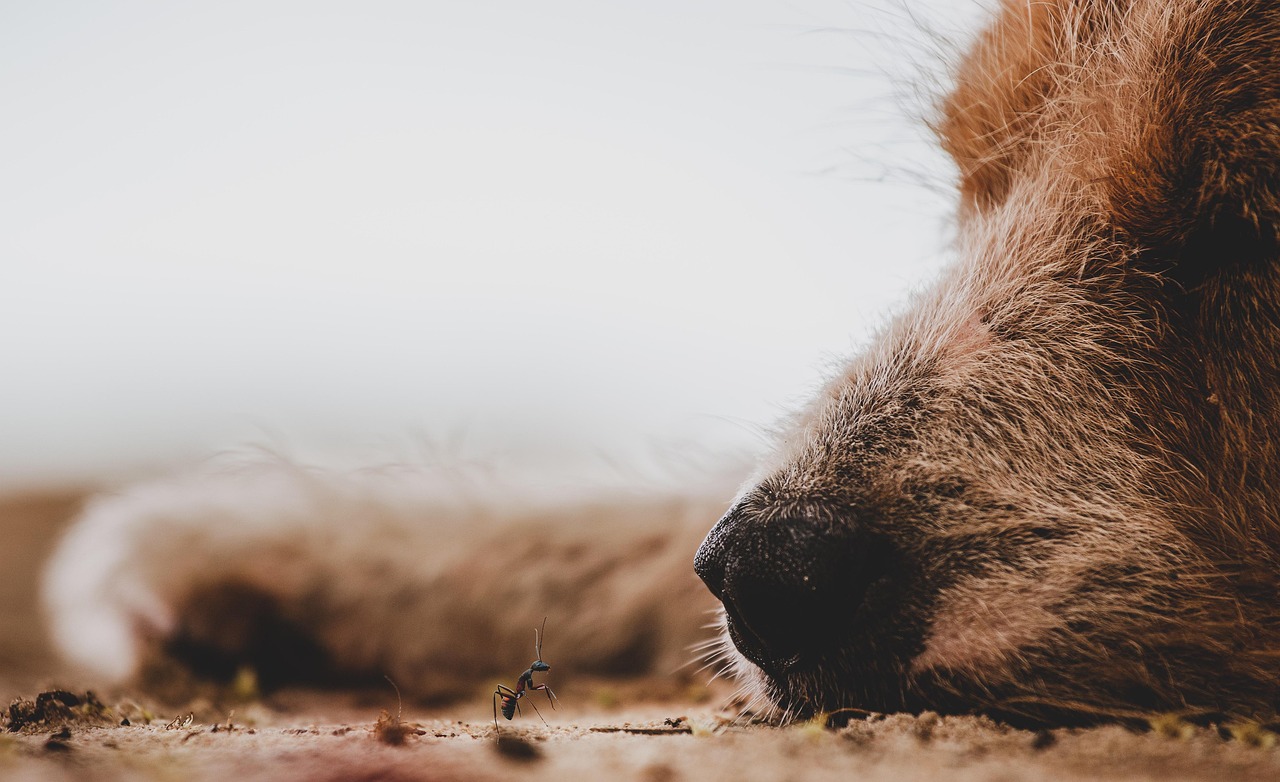
Benefits of Natural Oils
When it comes to grooming our furry companions, natural oils offer a treasure trove of benefits that go beyond mere aesthetics. Imagine your dog's coat glistening in the sunlight, their skin feeling soft and nourished—this is the magic that natural oils can bring into your grooming routine. Not only do these oils enhance the shine of your dog's coat, but they also play a crucial role in maintaining skin health and overall well-being.
One of the most appealing aspects of using natural oils is their moisturizing properties. Just like humans, dogs can suffer from dry skin, especially during harsh weather conditions. Oils such as coconut and olive oil can penetrate the skin, providing hydration and relief from irritation. This is particularly beneficial for breeds prone to skin issues or those with sensitive skin. Imagine applying a soothing balm to your own dry skin—natural oils create a similar comforting effect for your dog.
Moreover, natural oils are known for their soothing effects. If your dog experiences itching or irritation due to allergies or insect bites, certain oils can provide instant relief. For instance, a gentle massage with lavender or chamomile oil can help calm your dog's skin and promote relaxation. It's like giving your pup a spa day right in the comfort of your home!
In addition to their moisturizing and soothing properties, natural oils can significantly enhance the shine of your dog's coat. A glossy coat is not just a sign of good health; it also reflects the love and care you put into your pet's grooming routine. Oils such as jojoba and argan oil are excellent for adding that extra luster, making your dog look and feel fabulous. Plus, a shiny coat can act as a protective barrier against environmental stressors, keeping your dog's skin safe and sound.
Lastly, using natural oils in your grooming routine can contribute to your dog's overall well-being. Many oils are packed with antioxidants and essential nutrients that can support healthy skin and coat growth. For example, olive oil is rich in vitamin E, which is known for its skin-repairing properties. By incorporating these oils into your grooming practices, you're not just pampering your pet; you're actively promoting their health and happiness.
In summary, the benefits of using natural oils for dog grooming are multifaceted. From moisturizing and soothing properties to enhancing coat shine and promoting overall health, these oils can transform your grooming routine into a delightful experience for both you and your furry friend. So why not give it a try? Your dog will thank you with wagging tails and happy barks!
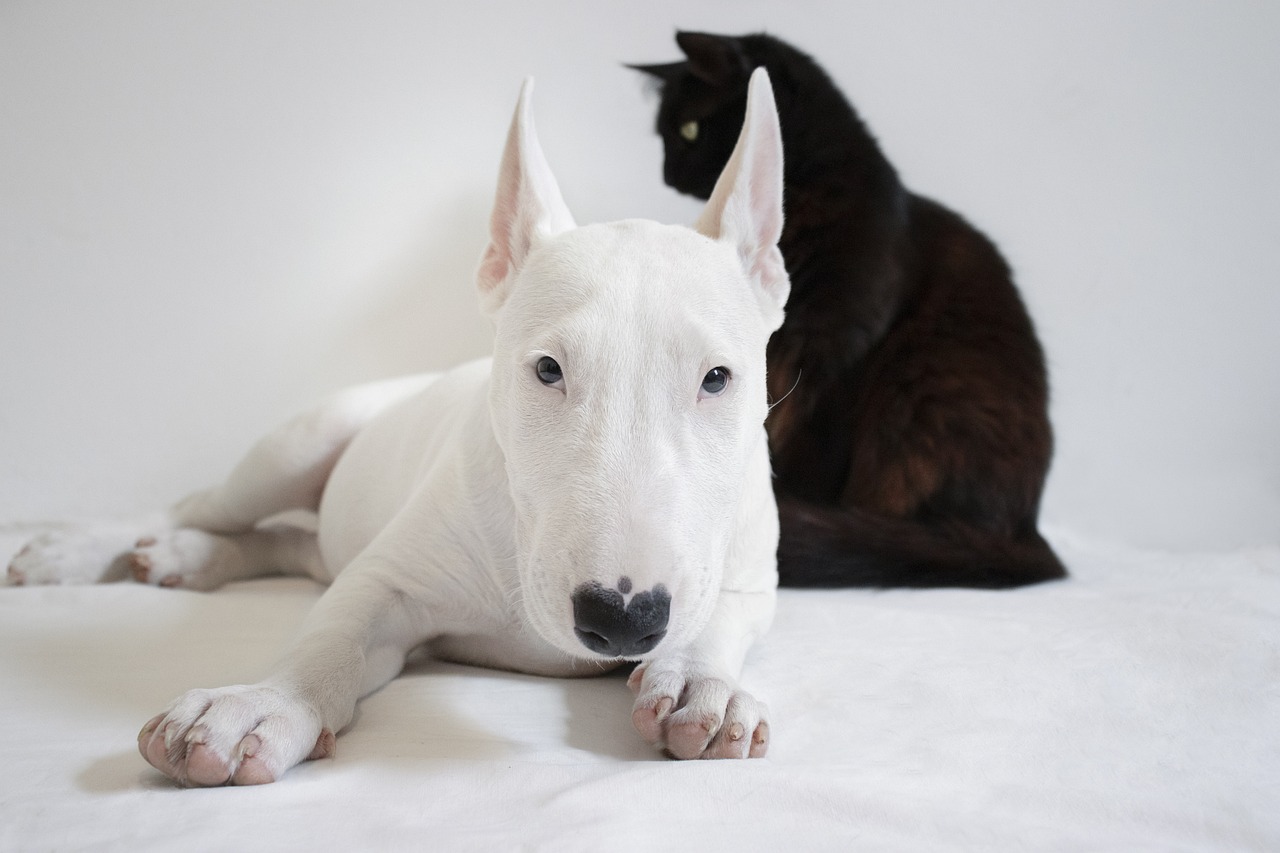
Choosing the Right Oils
When it comes to grooming your dog, choosing the right natural oils can make a world of difference. It’s not just about picking something that smells good; it’s about understanding the unique needs of your furry friend. Just like humans, dogs have different skin types and coat textures, which means they require specific oils to achieve the best results. So, how do you navigate this sea of options? Let's break it down!
First and foremost, you need to consider your dog's coat type. Is your dog’s coat long and flowing, short and sleek, or perhaps curly and dense? Each coat type has its own requirements. For instance, dogs with long hair often benefit from oils that provide extra moisture and shine, while short-haired breeds might need something lighter to avoid a greasy feel. This is where understanding the properties of various oils comes into play.
Here’s a quick guide to help you choose the right oil based on your dog's needs:
| Coat Type | Recommended Oils | Benefits |
|---|---|---|
| Long Hair | Coconut Oil, Jojoba Oil | Moisturizes, adds shine, detangles |
| Short Hair | Olive Oil, Almond Oil | Lightweight, enhances coat luster |
| Curly Hair | Argan Oil, Avocado Oil | Defines curls, hydrates, reduces frizz |
Moreover, it’s essential to consider any specific skin conditions your dog might have. For example, if your dog suffers from dry, flaky skin, oils like coconut oil can be particularly beneficial due to their moisturizing properties. On the other hand, if your dog has sensitive skin, you might want to opt for lighter oils that won’t irritate their skin further. Always remember, the goal is to enhance your dog’s health and comfort, not cause any additional issues.
Another factor to keep in mind is the source of the oils. Opt for high-quality, organic oils whenever possible. These oils are less likely to contain harmful additives or chemicals, making them safer for your pet. Always check the label and ensure that the oil is 100% pure. This is crucial because some oils might be mixed with synthetic ingredients that could do more harm than good.
Lastly, don’t hesitate to consult your veterinarian. They can provide personalized recommendations based on your dog’s specific needs, ensuring you make informed choices. After all, your pet’s health is paramount, and having expert advice can help you navigate the world of natural oils with confidence.
Popular Oils for Dogs
When it comes to grooming our furry companions, the right oils can make all the difference. Not only do they provide a myriad of benefits, but they can also transform your dog's grooming experience into something truly special. Let’s dive into some of the most popular natural oils that dog owners swear by, each with its own unique set of advantages.
Coconut Oil stands at the forefront of natural grooming oils. Its moisturizing properties are legendary, making it an excellent choice for dogs with dry or flaky skin. Beyond hydration, coconut oil also boasts antibacterial qualities, which can help in keeping your dog’s skin healthy and free from infections. Imagine rubbing a bit of this oil into your dog’s coat; not only are you pampering them, but you’re also promoting a shiny, lustrous fur that turns heads at the park!
Next up is Olive Oil, a kitchen staple that doubles as a grooming powerhouse. Rich in antioxidants, olive oil doesn’t just add shine; it actively improves skin health. When applied to your dog’s coat, it can help soothe irritations and promote a healthy sheen that glimmers in the sunlight. Plus, a little drizzle in their food can enhance their overall well-being, making it a versatile oil for both grooming and nutrition.
Another oil gaining popularity in the dog grooming community is Jojoba Oil. This oil is particularly beneficial for dogs with sensitive skin. It closely resembles the natural oils produced by their skin, making it an ideal moisturizer. Jojoba oil can help reduce itching and flaking while providing a protective barrier against environmental irritants. Applying this oil not only nourishes the coat but also creates a calming experience for your dog.
While these oils are fantastic on their own, combining them can yield even greater results. For example, mixing coconut oil with a few drops of lavender essential oil can create a soothing blend that calms anxious pups during grooming sessions. Always remember to test any new oil on a small patch of skin first to ensure your dog doesn’t have any adverse reactions.
In summary, the right oils can elevate your dog’s grooming routine from mundane to magnificent. Whether you choose coconut, olive, or jojoba oil, each has its unique benefits that cater to your dog’s specific needs. So, why not give them a try? Your furry friend will thank you with every wag of their tail!
1. Can I use human oils on my dog?
While some human oils can be safe, it’s best to stick to oils specifically recommended for dogs. Some human oils may cause irritation or allergies.
2. How often should I apply these oils?
It depends on your dog’s coat and skin condition. Generally, applying oils once a week is sufficient, but consult your vet for personalized advice.
3. Are there any oils I should avoid?
Yes, oils like tea tree oil and certain citrus oils can be toxic to dogs. Always research or consult a vet before using any new oil.
Coconut Oil
Coconut oil has become a go-to natural remedy for many dog owners, and for good reason! This versatile oil is not just a kitchen staple; it’s a powerhouse when it comes to grooming your furry friend. One of the most remarkable properties of coconut oil is its moisturizing ability. If your dog suffers from dry, flaky skin, a little coconut oil can work wonders. It penetrates deep into the skin, providing hydration and relief from irritation. Think of it as a luxurious spa treatment for your pup!
But that's not all. Coconut oil is also known for its antibacterial and antifungal properties. This means it can help combat various skin issues, including hot spots and infections. Applying coconut oil regularly can create a protective barrier on your dog's skin, reducing the risk of irritants causing problems. Plus, it helps promote a shiny, healthy coat that will make your dog the envy of the park!
When using coconut oil, it’s important to apply it correctly to maximize its benefits. Here’s a simple guide on how to do it:
- Start with a small amount: A little goes a long way. Begin with about a teaspoon for small dogs and a tablespoon for larger breeds.
- Warm it up: Rub the oil between your hands to warm it up. This makes it easier to spread and helps it absorb into the skin.
- Massage it in: Gently massage the oil into your dog’s skin and coat. This not only helps with absorption but also provides a soothing experience for your pet.
- Focus on problem areas: Pay extra attention to areas that are prone to dryness or irritation, such as elbows, paws, and the base of the tail.
For best results, consider using coconut oil as part of a regular grooming routine. Depending on your dog’s specific needs, you might want to apply it once a week or even more frequently if they have particularly dry skin. Just remember to keep an eye on how your dog responds. If they seem to love the extra attention and their skin looks better, you’re on the right track!
In summary, coconut oil is not just a trend; it’s a natural solution that can significantly enhance your dog's grooming routine. With its multitude of benefits, it’s definitely worth considering for your furry friend. So, why not give it a try? Your dog will thank you with every wag of their tail!
Olive Oil
When it comes to grooming our furry companions, stands out as a true powerhouse. This golden liquid is not just a staple in our kitchens; it also boasts a plethora of benefits for our dogs. Rich in antioxidants, olive oil helps combat free radicals, promoting a healthier skin barrier for your pet. Have you ever noticed how a shiny coat can brighten up a dog's appearance? Well, olive oil can do just that! Its nourishing properties help to add a beautiful luster to your dog's fur, making them look and feel fabulous.
But the benefits of olive oil go beyond just aesthetics. It serves as a natural moisturizer, effectively hydrating your dog's skin and preventing dryness and flakiness. If your dog suffers from itchy skin or allergies, incorporating olive oil into their grooming routine can be a game-changer. It provides relief from irritation, allowing your dog to feel more comfortable in their own skin. Just imagine how soothing it would be for them!
Moreover, olive oil isn't just beneficial when applied topically; it can also be a fantastic addition to your dog's diet. A little drizzle of olive oil over their food can promote overall well-being. It supports heart health due to its monounsaturated fats, which are known to be heart-healthy. Just be sure to consult with your veterinarian about the appropriate amount to add to your dog's meals.
When using olive oil for grooming, it's essential to apply it correctly. You can use a small amount and gently massage it into your dog's coat, focusing on areas that tend to be drier or more prone to irritation. This not only enhances the oil's absorption but also provides a calming experience for your pet. Think of it as a mini spa day for your furry friend!
In summary, olive oil is more than just a cooking ingredient; it's a versatile grooming aid that can improve your dog's skin and coat health. By incorporating it into your grooming routine, you can ensure that your beloved pet not only looks great but feels great too. So, the next time you reach for that bottle of olive oil, remember that you’re not just enhancing your meals, but also enriching your dog’s life!
- Can I use olive oil daily on my dog? - While olive oil is beneficial, it's best to use it a few times a week to avoid over-application.
- What if my dog has allergies? - Always consult your veterinarian before introducing new oils, especially if your dog has known allergies.
- How much olive oil should I add to my dog's food? - A teaspoon for small dogs and a tablespoon for larger dogs is generally recommended, but consult your vet for personalized advice.
Essential Oils for Dogs
When it comes to grooming our furry companions, essential oils can be a game changer. These concentrated plant extracts are not only aromatic but also offer a plethora of benefits for your dog's skin and coat. However, it's crucial to remember that not all essential oils are safe for dogs, and their potency means that they must be used with care. Think of essential oils as a powerful tool in your grooming kit; when used correctly, they can enhance your dog's health and happiness.
One of the most important aspects of using essential oils is understanding which ones are safe for dogs. Some oils, like lavender and chamomile, are known for their calming effects, making them excellent choices for anxious pups. On the other hand, oils such as tea tree and eucalyptus can be harmful if not diluted properly. Always consult with your veterinarian before introducing any new oils into your dog's grooming routine.
To ensure safe usage, essential oils should always be diluted before application. A common dilution ratio is one drop of essential oil for every tablespoon of carrier oil, such as coconut or olive oil. This not only makes the oils safer for your dog but also helps to spread the oil more evenly across their coat. If you're unsure about how to dilute, consider doing a patch test on a small area of your dog's skin to check for any adverse reactions.
Here’s a quick reference table for some popular essential oils and their benefits:
| Essential Oil | Benefits | Safety Notes |
|---|---|---|
| Lavender | Calming, helps with anxiety and promotes relaxation. | Safe when diluted. |
| Chamomile | Soothes skin irritations, anti-inflammatory. | Safe when diluted. |
| Frankincense | Supports immune system, reduces stress. | Safe when diluted. |
| Peppermint | Cooling effect, can help with itching. | Use with caution; may be too strong for some dogs. |
Incorporating essential oils into your dog's grooming routine can be an enriching experience for both of you. Just imagine how your dog feels as you gently massage the soothing oils into their coat, promoting not just a shiny appearance but also a sense of calm and well-being. It's like giving your dog a spa day right at home!
Remember, moderation is key. Using essential oils too frequently can lead to skin sensitivities or other issues. Aim to use them only a few times a week, and always monitor your dog for any unusual behaviors or reactions. After all, your dog's safety and comfort should always come first!
- Are essential oils safe for all dogs? Not all essential oils are safe for dogs. Always consult with your veterinarian before use.
- How do I dilute essential oils for my dog? A common dilution is one drop of essential oil per tablespoon of carrier oil.
- Can I use essential oils daily on my dog? It's best to use essential oils a few times a week to avoid any potential skin sensitivities.
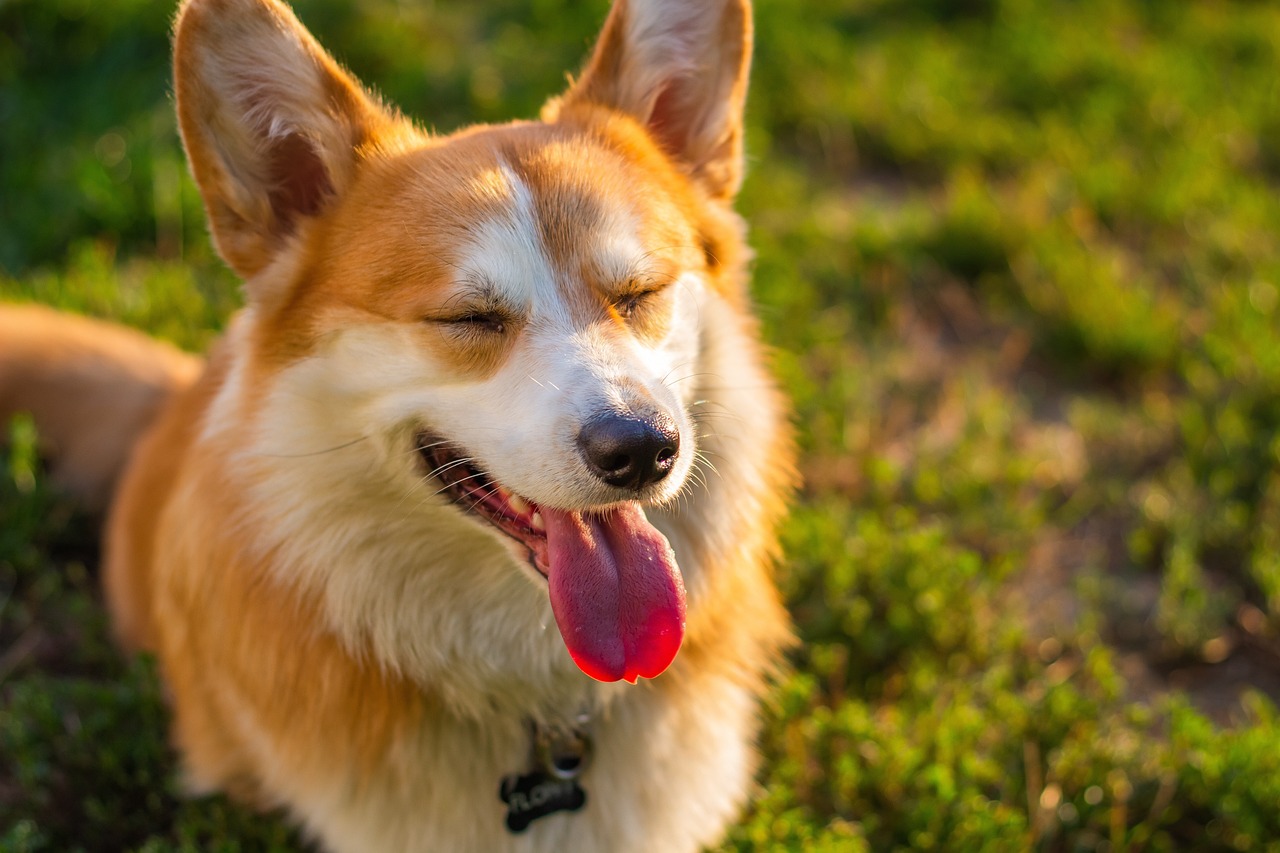
Application Techniques
When it comes to grooming your beloved dog with natural oils, the way you apply these oils can make all the difference. Just like a chef carefully selects the right method for preparing a meal, you need to be thoughtful about how you apply oils to your furry friend. Proper application techniques not only maximize the benefits of the oils but also ensure a pleasant experience for both you and your dog. So, let’s dive into some effective methods!
First off, it’s essential to prepare your dog for the grooming session. Start by creating a calm environment. You might want to play some soft music or have their favorite toys nearby. This will help your dog feel relaxed and more receptive to the grooming process. Once your dog is comfortable, it’s time to choose the right oil for their specific needs.
After selecting the oil, the next step is to warm it up slightly. You can do this by rubbing a small amount between your palms. Warming the oil not only helps it spread more easily but also makes it more enjoyable for your dog when it comes in contact with their skin. Think of it like warming up a cozy blanket before wrapping it around yourself on a chilly day!
Now, let’s talk about the actual application. Start by applying the oil to your dog's back and work your way down to their legs and tail. Use your fingers to massage the oil into their coat gently. This is where the magic happens! Massaging the oil helps with absorption and provides a soothing experience for your dog. You might notice them leaning into your hands or even closing their eyes in relaxation. It’s a win-win situation!
Here are a few massage techniques you can incorporate:
- Long Strokes: Use your palms to make long strokes along your dog’s back. This technique helps distribute the oil evenly.
- Circles: Use your fingertips to make small circular motions on areas that may need extra attention, like dry patches or irritated skin.
- Gentle Pressure: Apply gentle pressure while massaging, as this can stimulate blood flow and enhance relaxation.
As for how often you should use these oils, it really depends on your dog's coat type and skin condition. Generally, a good rule of thumb is to apply natural oils every 1-2 weeks. However, if your dog has particularly dry skin or a coarse coat, you might want to increase the frequency to once a week. Just be cautious not to overdo it, as too much oil can lead to greasiness and discomfort for your pup.
In conclusion, the application of natural oils is not just about slathering them on; it’s about creating a nurturing experience for your dog. By following these techniques, you can ensure that your grooming sessions are effective, enjoyable, and beneficial for your furry friend’s overall well-being.
Here are some common questions pet owners have regarding the application of natural oils in dog grooming:
- Can I use natural oils on all dog breeds? Yes, most natural oils are safe for all breeds. However, always do a patch test first to check for any allergic reactions.
- How do I know which oil is best for my dog? Consider your dog's specific needs. For example, coconut oil is great for dry skin, while olive oil can enhance coat shine.
- Are there any oils I should avoid? Yes, some oils like tea tree oil can be toxic to dogs. Always research before using any new oil.
Massage Techniques
When it comes to grooming your dog, incorporating can transform a routine task into a delightful experience for both you and your furry friend. Think of it as a spa day for your dog! Not only does massage help in the absorption of natural oils, but it also promotes relaxation, reduces anxiety, and strengthens your bond. So, how can you effectively massage your dog while applying those nourishing oils?
First, create a calm environment. Choose a quiet space where your dog feels safe and comfortable. You might want to lay down a soft blanket or mat to make the experience cozy. Once your dog is settled, warm a few drops of the chosen natural oil in your hands. This not only helps with the absorption but also makes the oil feel more pleasant on your dog’s skin.
Now, let’s dive into some techniques:
- Effleurage: This is a gentle stroking technique that helps stimulate blood flow. Start at the neck and work your way down to the tail, using smooth, even strokes. This technique is perfect for applying oils evenly across your dog’s coat.
- Petrissage: This involves kneading the skin and muscles. Use your fingers to gently pinch and roll the skin, which can help relieve tension and stress. Focus on areas where your dog might hold tension, like the shoulders and back.
- Friction: This technique is great for breaking down knots or tight spots in the muscles. Use your fingertips to apply small circular motions on areas that feel particularly tense. Be gentle and watch your dog’s body language to ensure they’re comfortable.
As you massage, keep an eye on your dog’s reactions. If they seem relaxed and enjoy the process, you’re on the right track! If they show signs of discomfort, it’s important to adjust your pressure or technique. Remember, every dog is different, and what works for one might not work for another.
Incorporating massage into your grooming routine not only enhances the benefits of natural oils but also creates a positive association with grooming. Your dog will start to look forward to these sessions, and you’ll both enjoy the extra bonding time. So, why not make grooming a pampering session instead of a chore? After all, a happy dog leads to a happy owner!
Frequency of Use
When it comes to grooming your furry friend with natural oils, understanding the is crucial for maintaining optimal skin and coat health. Just like we wouldn’t want to overdo it with our skincare routine, the same principle applies to our pets. Too much of a good thing can lead to adverse effects, such as greasy fur or skin irritation. So, how often should you pamper your pooch with these nourishing oils?
Generally, a good rule of thumb is to apply natural oils once a week for regular maintenance. This frequency allows the oils to penetrate the skin and coat effectively without overwhelming your dog’s system. However, this can vary based on your dog's specific needs, coat type, and skin condition. For example, if your dog has particularly dry skin, you might find that using the oils every three to four days yields better results. On the other hand, dogs with oily skin may require less frequent applications.
Consider these factors when determining the frequency of use:
- Coat Type: Dogs with long, thick fur may benefit from more frequent applications compared to short-haired breeds.
- Skin Condition: If your dog suffers from allergies, dryness, or other skin issues, consult your veterinarian for personalized recommendations on oil use.
- Seasonal Changes: During colder months, dogs may require more frequent oil applications due to drier air and skin. Conversely, in humid conditions, less frequent use may be sufficient.
It's also essential to observe your dog after applying oils. If you notice any signs of irritation, such as redness or excessive scratching, it might be a sign that you're using the oils too often or that your dog is sensitive to a particular oil. Always start with a small amount and gradually increase as needed, keeping a close eye on how your dog reacts.
In summary, while a weekly application is a great starting point, be flexible and adjust based on your dog's individual needs. Regular monitoring and adjustments will ensure your grooming routine is both effective and enjoyable for your furry companion.
Here are some common questions pet owners have regarding the use of natural oils for dog grooming:
- Can I use human oils on my dog? - It's best to stick to oils specifically designed for dogs, as some human oils can be toxic to pets.
- How do I know if my dog is allergic to a specific oil? - Start with a small patch test on your dog's skin and watch for any reactions over 24 hours.
- Should I mix different oils? - Yes, but do so cautiously. Some combinations can enhance benefits, while others may not be ideal.
Frequently Asked Questions
- What are the benefits of using natural oils for dog grooming?
Natural oils offer a plethora of benefits for your furry friend. They can help moisturize the skin, soothe irritations, and enhance the shine of your dog's coat. Using these oils can also improve overall skin health, making your grooming routine not just about looks but about your dog's well-being too!
- Which natural oils are best for my dog's coat type?
Selecting the right oil depends on your dog’s specific needs and coat type. For instance, if your pup has dry skin, coconut oil is a fantastic choice due to its moisturizing properties. On the other hand, olive oil can be great for a shiny coat and overall health. Always consider your dog's individual requirements when choosing an oil!
- Are essential oils safe for dogs?
Essential oils can be beneficial, but caution is key! Not all essential oils are safe for dogs, and they must be properly diluted before use. Always research which oils are safe and consult with a veterinarian if you're unsure. Remember, what works for humans might not be suitable for our four-legged friends!
- How often should I use natural oils on my dog?
Frequency of use varies based on your dog's needs and the type of oil used. Generally, applying natural oils once a week can help maintain a healthy coat without overdoing it. However, always observe your dog's skin and coat condition and adjust as necessary!
- Can I use cooking oils like olive oil for grooming?
Absolutely! Cooking oils like olive oil are not only safe but can also provide numerous benefits for your dog's coat and skin. They are rich in antioxidants and can enhance the overall health of your pup. Just make sure to choose high-quality, pure oils for the best results!
- How can I effectively apply oils to my dog?
To maximize the benefits, start with a small amount of oil and warm it in your hands before applying. Use gentle massage techniques to help the oil absorb better into the skin and coat. This not only enhances the oil’s effectiveness but also provides a calming experience for your dog during grooming!









